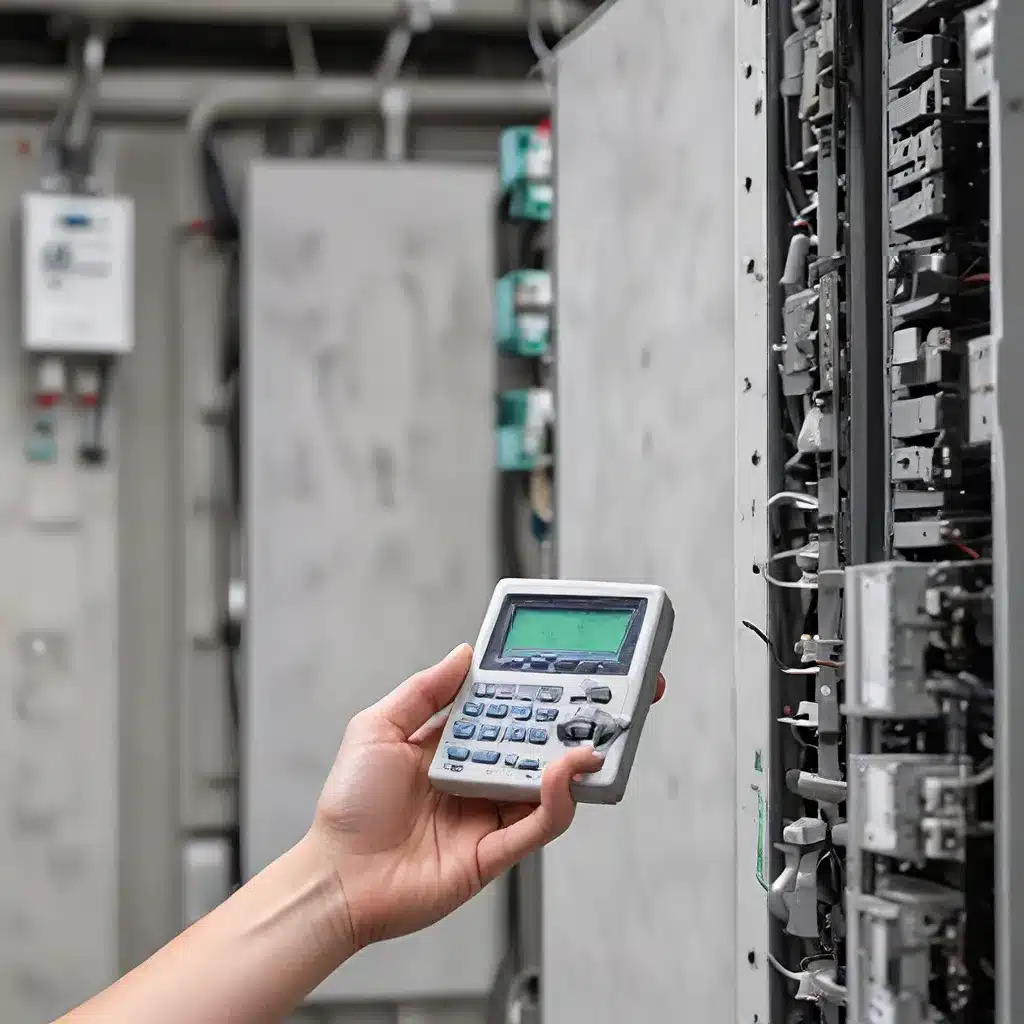
Sensor Calibration: The Foundation of Reliable Building Automation
Sensor calibration is a critical aspect of building automation systems (BAS), ensuring the accuracy and reliability of data collected from various sensors throughout a facility. These sensors play a vital role in monitoring and controlling the environmental conditions, energy usage, and overall performance of a building. Proper calibration is essential to optimize building efficiency, maintain occupant comfort, and comply with regulatory standards.
In the context of building automation, sensors are used to measure a wide range of parameters, such as temperature, humidity, pressure, air quality, occupancy, and energy consumption. Accurately calibrating these sensors is crucial, as even minor deviations can lead to significant operational inefficiencies and suboptimal decision-making by the BAS.
The Importance of Accurate Sensor Calibration
Accurate sensor calibration offers numerous benefits for building owners, facility managers, and occupants:
- Energy Efficiency: Precise monitoring of environmental conditions and energy usage enables the BAS to optimize HVAC, lighting, and other building systems, reducing energy consumption and costs.
- Occupant Comfort: Calibrated sensors ensure that the BAS can maintain optimal temperature, humidity, and air quality levels, creating a more comfortable and productive environment for building occupants.
- Compliance and Regulations: Many industries and regions have specific regulations regarding indoor air quality, ventilation, and energy efficiency. Accurate sensor calibration helps building owners comply with these requirements and avoid potential penalties.
- Preventive Maintenance: Well-calibrated sensors can detect early signs of equipment malfunctions or deterioration, allowing facility managers to address issues before they become larger problems.
- Data Accuracy: Reliable sensor data is crucial for data-driven decision-making, ensuring that building owners and operators can make informed choices about system upgrades, retrofits, and operational adjustments.
Sensor Calibration Techniques
There are various calibration techniques and best practices to ensure the accuracy of building automation sensors:
- Factory Calibration: Sensors are often pre-calibrated by the manufacturer to specific standards, ensuring a high degree of accuracy out of the box. Regular recalibration by the manufacturer may be necessary to maintain performance.
- Field Calibration: Facility managers or technicians can calibrate sensors on-site using specialized equipment, such as reference standards or calibration devices. This allows for customized adjustments to suit the unique environmental conditions of a building.
- Sensor Drift Compensation: Over time, sensors can experience “drift”, where their readings gradually deviate from the true values. Implementing periodic recalibration or using self-calibrating sensors can help compensate for this drift and maintain consistent accuracy.
- Cross-Validation: Comparing sensor readings across multiple redundant or complementary sensors can help identify any discrepancies or anomalies, allowing for targeted recalibration or sensor replacement.
- Automated Calibration: Some BAS platforms offer automated calibration features, where the system can periodically check sensor readings against known references and self-adjust the calibration as needed, reducing the burden on facility staff.
Integrating Sensor Calibration into Building Automation Workflows
To ensure the long-term reliability and performance of a building automation system, sensor calibration should be seamlessly integrated into the overall maintenance and operations workflows:
- Calibration Schedules: Establish a regular calibration schedule for each type of sensor, based on manufacturer recommendations, industry standards, and the specific environmental conditions of the building.
- Calibration Documentation: Maintain detailed records of all calibration activities, including the date, calibration values, and any adjustments made. This documentation can be invaluable for troubleshooting, compliance, and future reference.
- Calibration Alerts: Incorporate automated alerts into the BAS to notify facility managers when sensors are due for calibration or have experienced significant drift, ensuring timely maintenance.
- Calibration Training: Provide ongoing training for facility staff on proper calibration techniques, the use of calibration equipment, and the interpretation of sensor data to ensure consistent and accurate results.
- Calibration Workflows: Integrate sensor calibration into standard operating procedures and maintenance schedules, ensuring that it becomes a routine and integral part of the overall building management process.
Sensor Network Design Considerations for Accurate Monitoring
In addition to proper calibration, the design and deployment of the sensor network itself can also have a significant impact on the accuracy and reliability of building automation data. Key considerations include:
- Sensor Placement: Strategically position sensors to capture representative environmental conditions, avoiding areas with localized influences or potential interference.
- Sensor Redundancy: Install multiple sensors for critical parameters to cross-validate readings and improve data reliability.
- Sensor Communication: Ensure robust and secure communication protocols between sensors and the BAS, minimizing signal interference or data loss.
- Sensor Maintenance: Develop a comprehensive maintenance plan to regularly inspect, clean, and replace sensors as needed to maintain optimal performance.
- Sensor Upgrades: Periodically evaluate new sensor technologies and consider upgrades to take advantage of improved accuracy, precision, and connectivity features.
Conclusion: Unlocking the Full Potential of Building Automation Systems
Accurate sensor calibration is the foundation for effective building automation systems, enabling facility managers to optimize building performance, enhance occupant comfort, and achieve energy efficiency goals. By integrating calibration best practices into their overall building management workflows, facility owners and operators can unlock the true potential of their BAS and drive sustainable, data-driven decision-making.
As the sensor network technology continues to evolve, with advancements in areas like sensor networks and IoT, the importance of precise sensor calibration will only become more crucial in the pursuit of smart, efficient, and responsive building automation systems.